Introduction
E-business involves application of information and communication technologies in support of all business processes. In general, e-business is utilizing internet technologies to offer better customer service, update business activities, minimize expenses and improve sales revenue.
Generally, “e-business uses tools such as email, online banking solutions, websites, supply chain management software and web-based customer relationship management,” enabling businesses to achieve the following benefits (Canadabusiness, 2011). It helps businesses to cut cost and transaction times; saves time and money by improving internal and external functions; and streamlines internal and external supply chain management.
Moreover, it promotes marketing and selling to the global market at all times of the day through a website in the internet. Additionally, it helps to improve customer service, communication and relationship management. Lastly, it enables businesses to compete globally through the websites independent of their sizes without even setting offices in other countries (Canadabusiness, 2011).
E-business can be valuable to all types of businesses by doing business online and it is aimed at creating a business platform in which small and large enterprises can compete in the same level without much competitive advantage favoring any enterprise in terms of size. Below is a diagram showing how e-business can integrate and make businesses dynamic.
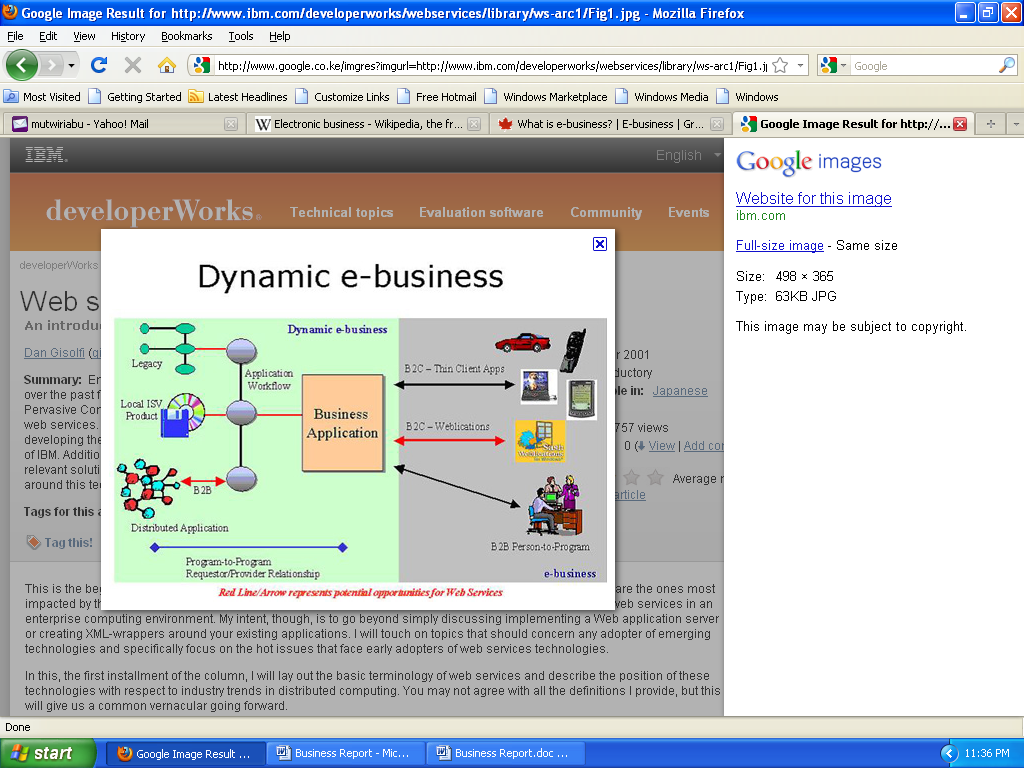
Gisolfi, D., 2001.
One of the major components of e-business is e-commerce. E-commerce is the use of telecommunications and computers to facilitate the trade of goods and services (Pankaj, 2010, P. 3).
Thus, e-commerce involves business operations taking place between different businesses or involving a business enterprise and customer interaction through electronic networks, with operations involving electronic funds transfer, e-marketing, customer service, online transaction processing, B2B data exchange, and trade in digitized goods and services. Other components of e-business include the internal business systems and the enterprise communication and collaboration systems (Pankaj, 2010, P.1).
The Implementation of e-business software
To manage E-Business implementation effectively, efficiently and successfully, expertise is required, which is gained from individual differences and similarities among e-business implementation efforts in the real world. This is especially where there are organizational conflict, dysfunctional operations, many issues and problems, cultural resistance to change, and many opportunities for e-business (Lientz, & Rea, 2001, P.10).
In implementing e-business, an organization is acquiring and setting aside resources with aim to achieve specific goals in an organized and laid out manner. To achieve success, e-business implementation should support the vision and be in line with the E-business strategy the organization has selected.
In addition, to begin the implementation process, implementation teams are formed and resources are drawn from the line organizations, support organizations such as IT, and external firms (Lientz, & Rea, 2001, P.10). Thus, implementation will involve project and routine work performed by the line and support organizations. Shown below is a structure representing what implementation of e-business involves.
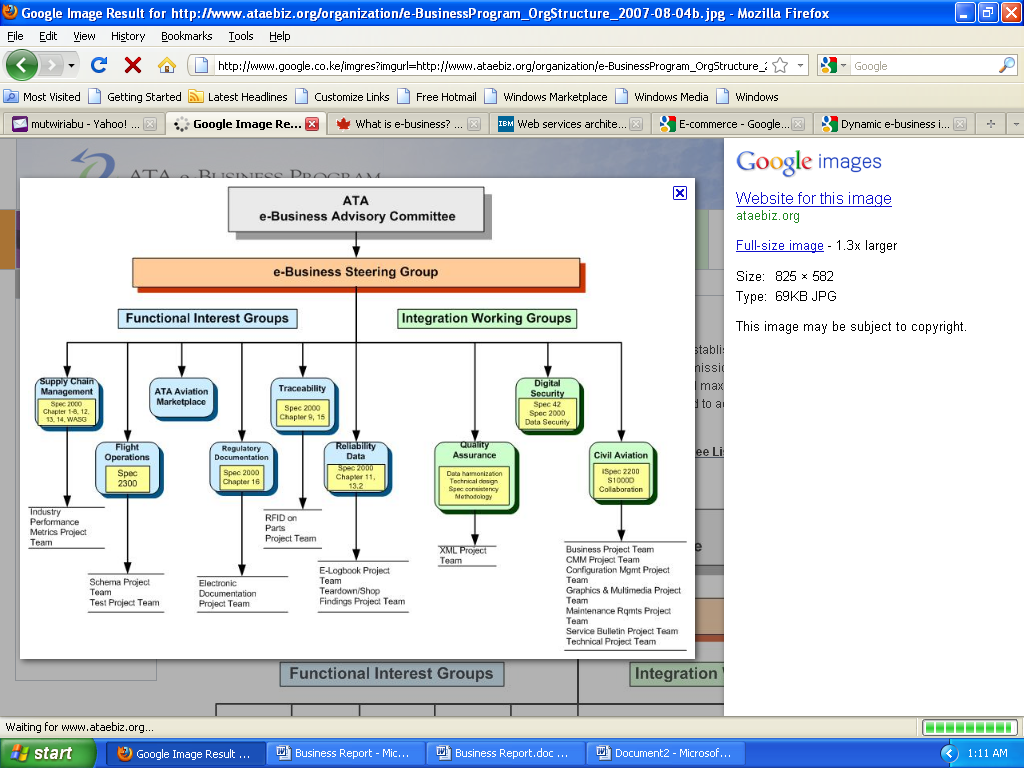
Source: ATA, 2011.
Assessing implementation of e-business in an organization
In assessing implementation of e-business in an organization, the following steps are taken. First, understand the basics of the business. E-business must always be aligned with the core of the business basic objectives; therefore, in the study, one must consider the politics of the business, check where customers or suppliers touch the organization and business most frequently, examine the stable areas of an organization, and check how culture plays a strong role in business. Then, based on these reasoning, one should formulate questions to be used in the study (Lientz, & Rea, 2001, P.46).
Secondly, identify previous attempts at improvements. Thirdly, determine how the company addresses innovation. There are four types of companies depending on how they approach innovation. Innovators are companies that analyze a method and then try to implement it and achieve a result.
Followers are companies that attempt to implement changes but may not have the will to follow through for major benefit. Dabblers investigate several methods, but they never implement the change. Lastly, resisters distrust methods, concentrating only on basics (Lientz, & Rea, 2001, P.49).
Fourthly, determine the organization business strategy for e-business. Firth, collect information. The data should be collected by passive means through utilizing organization charts, vision statements, long-range plans, policies and procedures, and some external information on the company and the industry (Lientz, & Rea, 2001, P.50). More so, analyze the collected data to get results. Additionally, summarize the chosen business activities. Lastly, create comparison tables.
The results of implementation of e-business in an organization
After assessing the implementation process, the results of implementation need to be analyzed and interpreted to gauge the level of success or failure of implementing e-business in an organization. This report will base the results on survey findings from an evaluation of a study carried out to establish the level to which e-business has been applied in the US construction industry.
In this study, “the survey was distributed to a random sample of 91 companies out of the 2001 Engineering News Record Top 400 US Contractors ranked by gross annual revenue who had a WWW presence” (Issa, Flood, & Caglasin, 2003, P.6).
In addition, to the demographic information about the 20 respondents, selected results of the survey are presented within the following four study areas: adoption of e-Business, communication tools usage, e-Business initiatives, and their prioritized goals for e-Business (Issa, Flood, & Caglasin, 2003, P.6).
Survey Demographics
An examination involves job functions of the sample selected, the distribution of the workforce in the industry, and the spread of operations within a given area of coverage, as shown in the following charts.
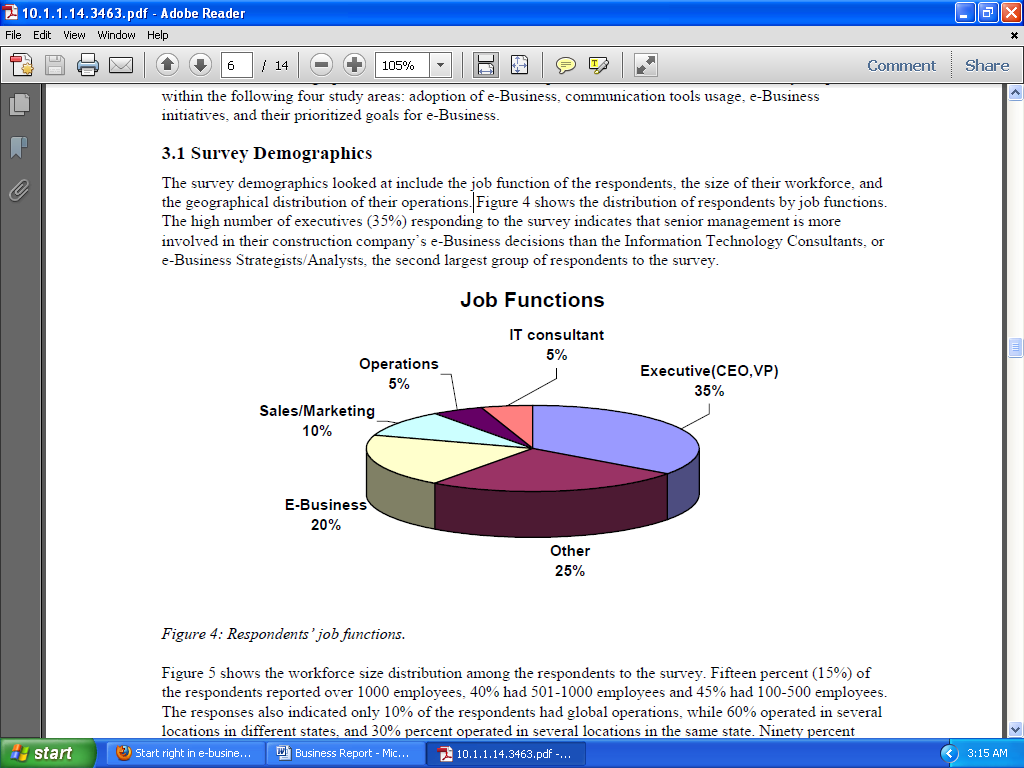
Source: Issa, R.R., Flood, I., & Caglasin, G., 2003. A Survey of E-Business Implementation in the US Construction Industry. ITcon, Vol. 8, p. 20.

Source: Issa, R.R., Flood, I., & Caglasin, G., 2003. A Survey of E-Business Implementation in the US Construction Industry. ITcon, Vol. 8, p. 21
E-Business Implementation
The respondents shown that construction companies adopt e-business with the rate of adoption among the respondents being 82.3% indicating that companies involved in the survey implemented some form of e-business activities.
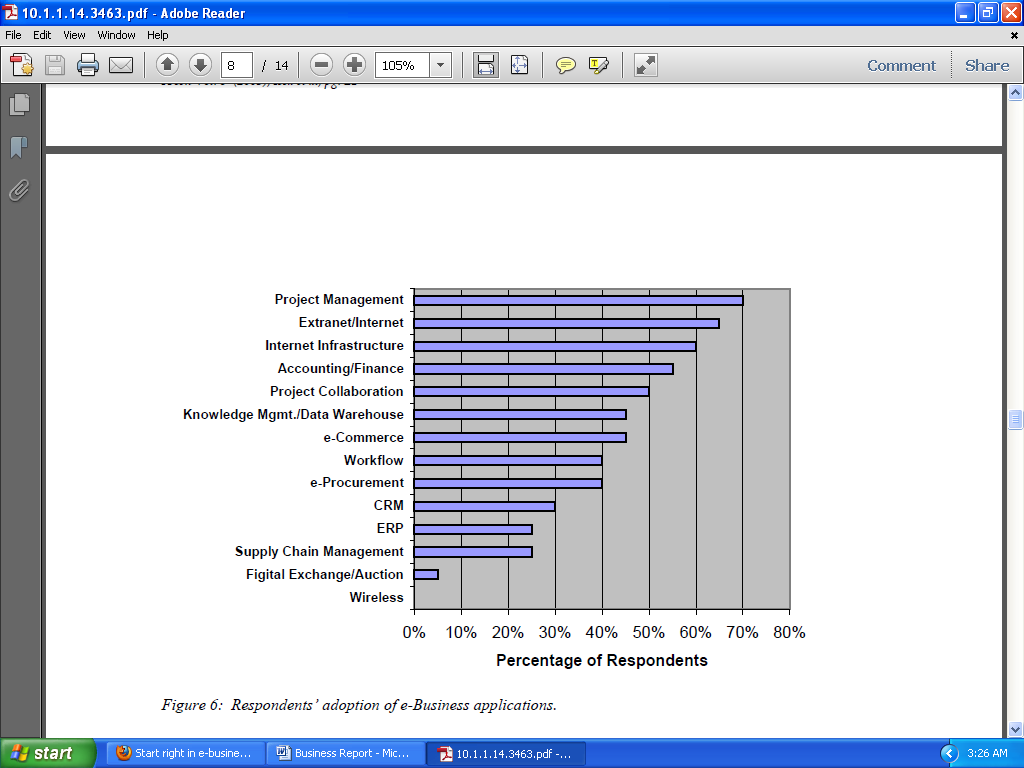
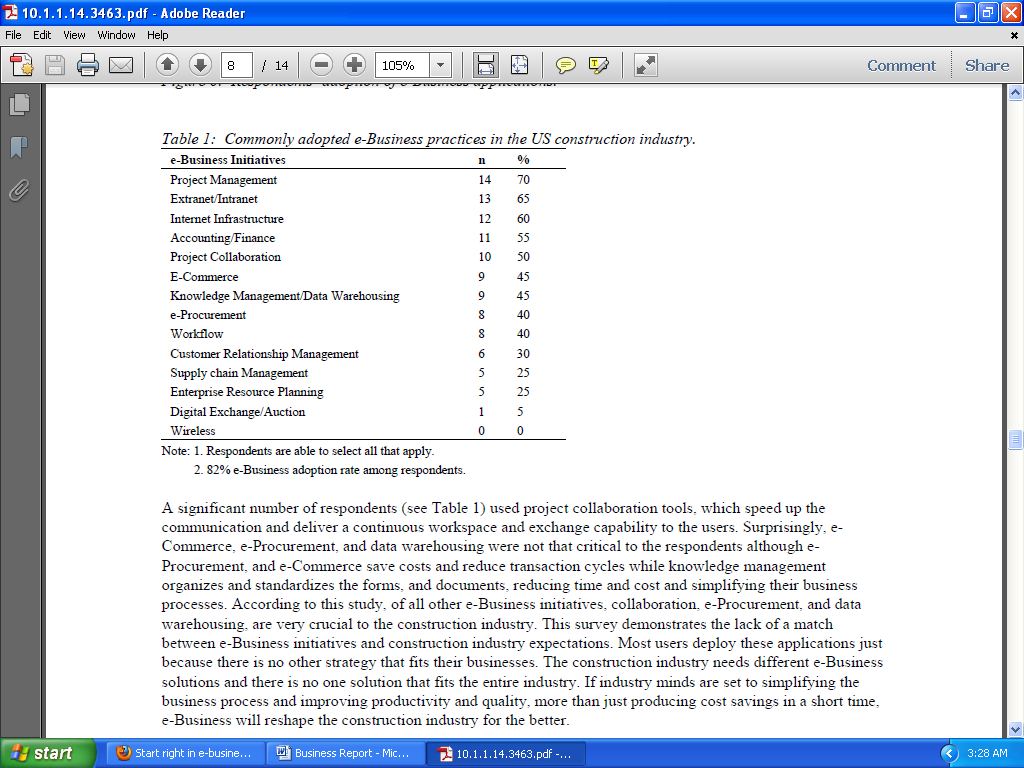
Source: Issa, R.R., Flood, I., & Caglasin, G., 2003. A Survey of E-Business Implementation in the US Construction Industry. ITcon, Vol. 8, p. 22.
Communication tools
The survey was conducted based on the following question: “What type of connections do you have with your suppliers, partners, and customers?” (Issa, Flood, & Caglasin, 2003). In response, the aim was to establish how communication thrived between the various parties involved in the survey, more so the extent to which internet was embraced as a communication tool. The results were presented as shown below.
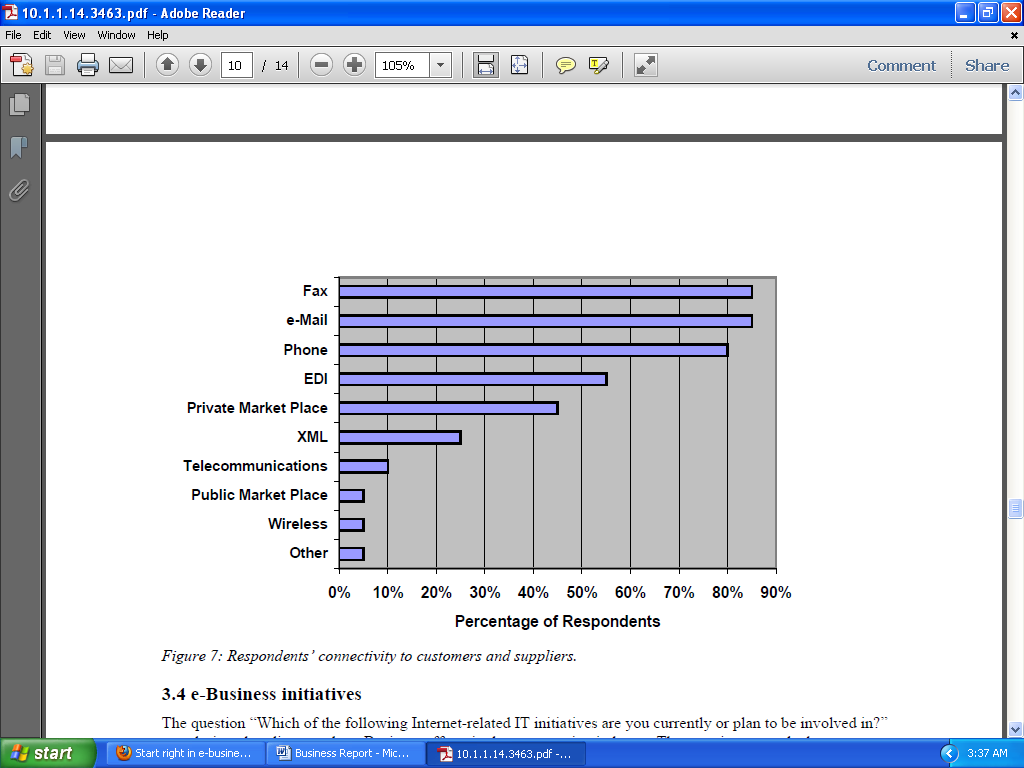
Source: Issa, R.R., Flood, I., & Caglasin, G., 2003. A Survey of E-Business Implementation in the US Construction Industry. ITcon, Vol. 8, p. 24.
E-Business initiatives
The survey aimed at checking to explore e-business efforts in the construction industry, and the following finding were recorded regarding various e-business initiatives.
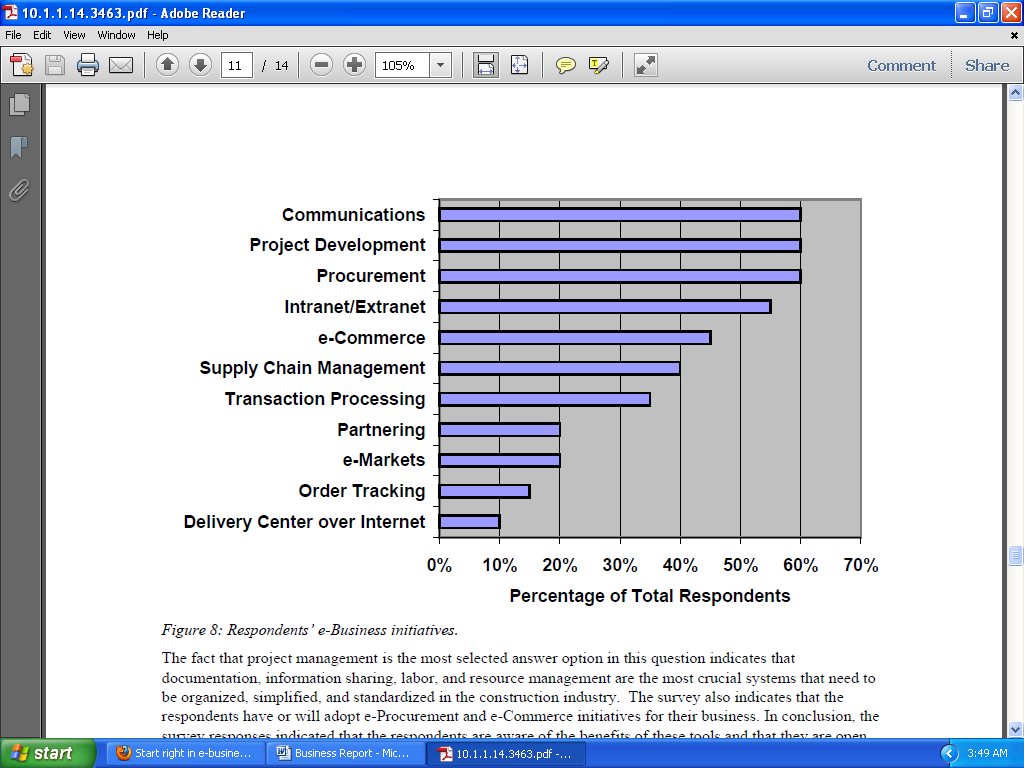
Source: Issa, R.R., Flood, I., & Caglasin, G., 2003. A Survey of E-Business Implementation in the US Construction Industry. ITcon, Vol. 8, p.25.
The US construction industry’s prioritized goals
The survey sought to establish how e-business impacted on the lives and activities of the respondents, as well as their preferences on such influence, with the following being gathered.
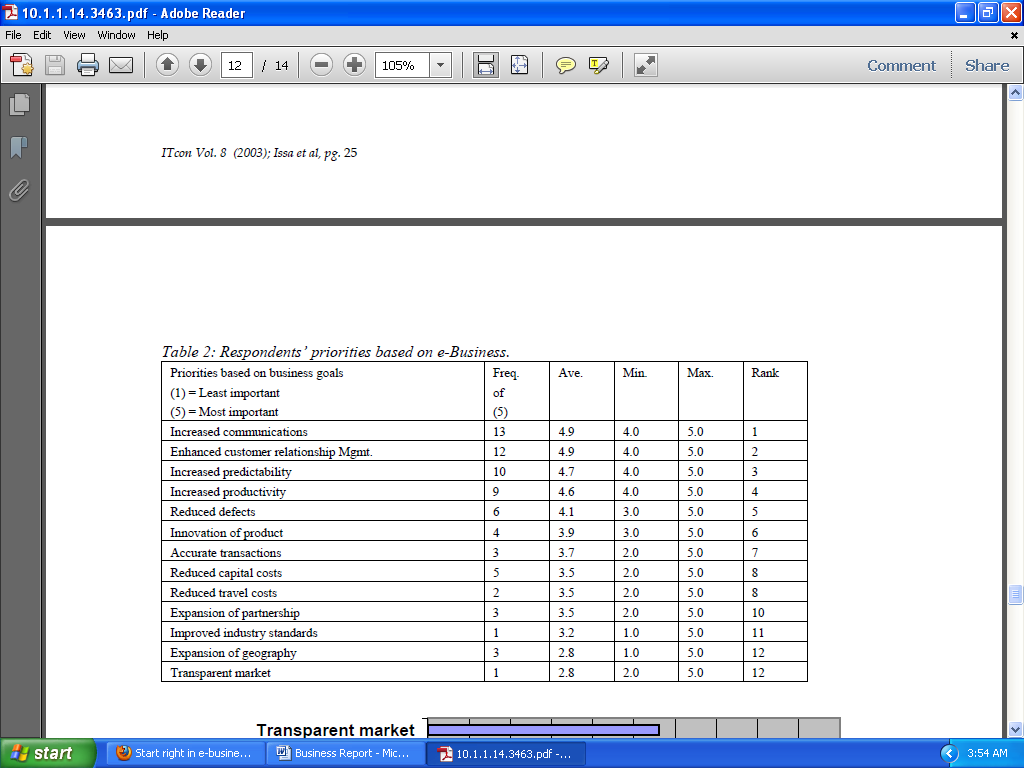
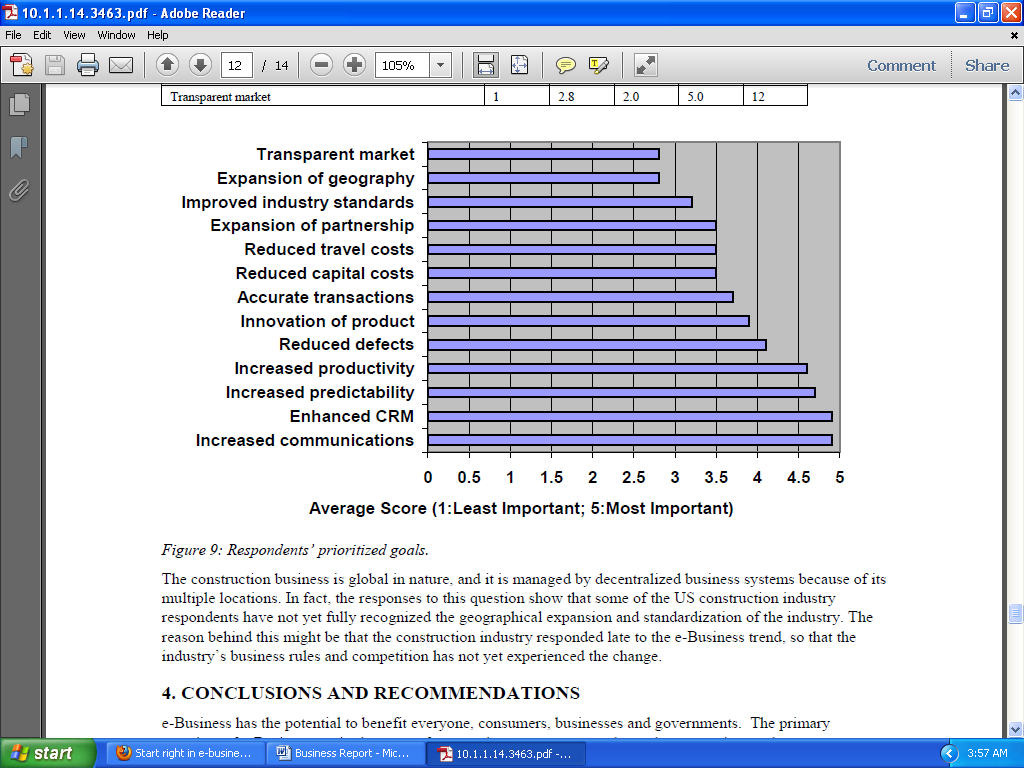
Source: Issa, R.R., Flood, I., & Caglasin, G., 2003. A Survey of E-Business Implementation in the US Construction Industry. ITcon, Vol. 8, pg. 26
Conclusion and Recommendations
E-business has proven to benefit all parties involved in business from customers, businesses and regimes. There is much expectations from e-business in terms of cost saving, revenue growth, market expansion, and customer satisfaction (Issa, Flood, & Caglasin, 2003, P.26).
E-business is more focused in streamlining businesses to improve their efficiency, productivity and quality. In essence, internet presents a medium to negotiate bulk prices, to purchase hard-to-find products, to collaborate with partners and suppliers, and to create a market that grows beyond traditional regional boundaries (Issa, Flood, & Caglasin, 2003, P.26).
The study further shows that the US construction contributors are very knowledgeable in terms of internet technologies and can provide a lot of support in implementation of e-business programs developed specifically for the US construction industry.
Reference List
ATA. 2011. Organizational Structure and Operating Guidelines. Air Transport Association of America Inc. Web.
Canadabusiness. 2011. What is e-business? Government of Canada. Web.
Gisolfi, D., 2001. Web services architect: Part 1. An introduction to dynamic e-business. Web.
Issa, R.R., Flood, I., & Caglasin, G., 2003. A Survey of E-Business Implementation in the US Construction Industry. University Of Florida. ITcon, Vol. 8. Pp 15- 27.
Lientz, B.P. & Rea, K.P., 2001. Dynamic e-business implementation management: how to effectively manage e-business implementation. California: Academic Press.
Lientz, B.P. & Rea, K.P., 2001. Start right in e-business: a step by step guide to successful e-business implementation. California: Academic Press.
Pankaj, S., 2010. E-commerce. New Delhi: APH Publishing.